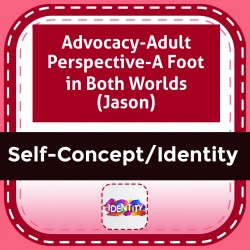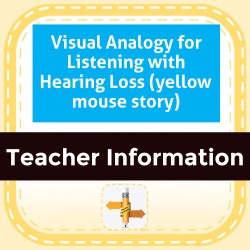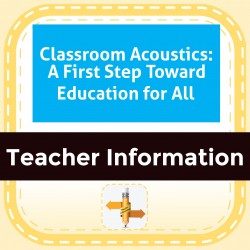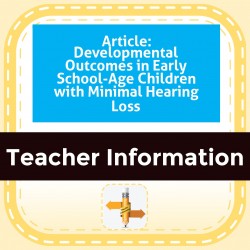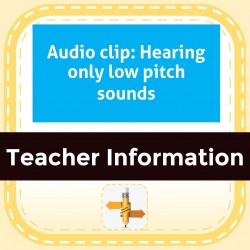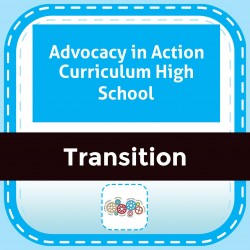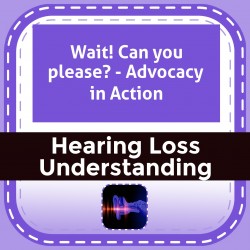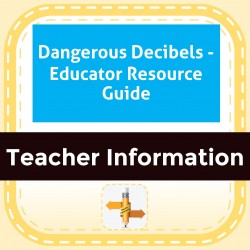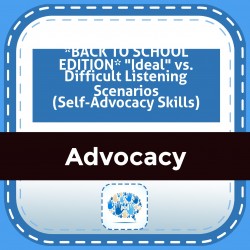Ability Levels
Categories
Resource Types
Age/Grade Range
CCSS
Anchor Standard
Speaking & Listening
Language
Reading
Advocacy-Adult Perspective-A Foot in Both Worlds (Jason)
$ 2
Expose older students to how self-advocacy skills different from school to adult life. Students are given an article written by an adult with hearing loss. Encourage discussion and forward-thinking wi
...
th this activity. This article deals with developing an identity as a person who is from the Deaf culture or who functions in the world as a hard of hearing communicator. See BUNDLE at S0XSCI729.
Visual Analogy for Listening with Hearing Loss (yellow mouse story)
$ 0
Visual analogy of how a 25 dB hearing loss can impact speECH- perception of a common children's story. Word endings and unemphasized parts of words have been deleted or combined to challenge comprehen
...
sion. Includes translation of the story.
Classroom Acoustics: A First Step Toward Education for All
$ 0
Handout from a slideshow presentation describing the impact of inappropriate classroom acoustics on student speECH- perception and learning. Includes graphs/charts but not slides. 2008.
Article: Developmental Outcomes in Early School-Age Children with Minimal Hearing Loss
$ 0
This study examined PS-ychoeducational outcomes of age-matched grouPS- of children with minimal hearing loss. Supports early identification of hearing loss and the need for academic and social support
...
.
Audio clip: Hearing only low pitch sounds
$ 150
Simulation from original 1960s record: low pitch hearing loss.
Advocacy - Steps to SA Success Goal 2- Use of Technology
$ 3
Students learn vocabulary associated with hearing technology and how to take care of it. Use this fillable worksheet with students to problem-solve what is good/bad for devices.
Advocacy in Action Curriculum High School
$ 1050
Complete curriculum guidance and scenarios for instruction in the students involvement in IEP planning, understanding and applying the law, assistive devices, and exploring options after graduation (
...
transitioning into the workplace or postsecondary school).
Wait! Can you please? - Advocacy in Action
$ 1
Worksheet in which the student completes: a) What's going on now... b) Why I can't hear… c) How I can make it better.
Dangerous Decibels - Educator Resource Guide
$ 0
Educator Resource Guide from www.dangerousdecibels.org. Provides background information for the teacher, 4 hands-on classroom activities and an extensive glossary.
*BACK TO SCHOOL EDITION* "Ideal" vs. Difficult Listening Scenarios (Self-Advocacy Skills)
$ 375
This resource contains 15 possible listening situations for DHH learners. Read each scenario and have your student decide if this is an "ideal" listening situation or a "difficult" listening situation
...
 Your browser is out of date. For best experience switch to latest updated Browser.
Your browser is out of date. For best experience switch to latest updated Browser.
 Get Chrome
Get Chrome Get Edge
Get Edge Get Firefox
Get Firefox